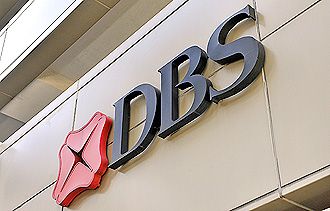
This article is reproduced with permission from www.martinlee.sg a blog focusing on financial matters in Singapore. The information is for educational purposes only and any opinions, conclusions or other information expressed here does not constitute personal advice.
THERE HAS been a spate of rights issues by listed companies recently. And you can expect many more to come as SGX recently announced some changes that will make it easier for companies to raise capital through issuing rights.
In the current economic climate, more and more companies find that they require more funds. There is also the problem of existing credit lines of companies being reduced, thus increasing their need to raise capital.
Traditionally, there are two main ways for companies to raise capital - via debt or equity.Debt can be raised through bank borrowings or the issuing of bonds. The problem with bank borrowings now is that banks are unwilling to lend money. If they agree to lend, the interest rates are higher than normal. For bonds, there might not be enough takers.
Equity can also be raised through issuing preferred shares, private placement of shares or rights issues.
In a private placement, shares are issued to a selected group of people at a particular price. The problem with this method is that the traded price of many companies are low now. Existing shareholders will be extremely unhappy if a private placement is done at low prices and their shareholdings get diluted. It would be like daylight robbery.
A rights issue overcomes the problem of a private placement by offering all shareholders an equal chance to subscribe to the new shares at the low price. While this might seem fairer than a private placement that would benefit only selected people, it does come with its disadvantages to existing shareholders.
Let’s say you own 1,000 shares of company X and the shares were purchased at $1 each. The company has 100,000 shares in circulation, so you own 1% of the company.
Suppose you were only willing to commit $1,000 when you purchased the shares. And that is the amount you will lose should the company go bust.
Now company X decides to issue a 1-for-1 rights at a price of $0.80. Assuming you subscribe to your entitlement, you would have paid an additional $800 to purchase 1000 shares.
While the number of shares you own has now increased to 2,000, your percentage of shareholdings actually remain unchanged – that is, 2,000 out of 200,000 which is 1%.
You have been “forced” to pump in more money to maintain your ownership of the company and your capital at risk has increased to $1,800. This is like the reverse of issuing dividends. You have the right to refuse to subscribe for the rights, of course.

If you do nothing at all, your initial shareholding of 1,000 shares will become only 0.5% after all the new shares are issued. This would be a huge mistake.
The very least you should have done is to sell off the rights to recover some capital if you are not going to subscribe for the new shares. This will help to compensate slightly for the dilution of shares.
I always find the term “rights” an irony. The rights of shareholders are these few options:
* Subscribe to the rights based on the amount of money needed by the company. You are at the mercy of the terms of subscription price as well as number of shares you can subscribe to.
* Sell off the rights, keep the shares and have your shareholdings diluted.
* Sell off the shares completely.
Sometimes, an investor finds none of the options is attractive.
For example, he could be positive about the company but he doesn’t have the cash to subscribe to the new shares. Neither option 2 or 3 would be good for him.
Take my case: I was holding the shares of a particular company in my CPF Ordinary Account. As my CPF stock limit was already maxed out, I couldn’t subscribe to the rights that were being offered.
The option given to me was to top up cash in my CPF investment account and use it to subscribe to the rights. This was not attractive to me at all as the money would basically be stuck inside CPF after the transfer.
Faced with the prospect of a massive dilution of my shareholding, I had to decide whether to sell off my holdings (at firesale prices).
One way out (if I am positive about the company) was to sell the shares inside the CPF account, repurchase them using cash and subscribe to the rights. That’s very messy and incurs transaction costs.
This is a case of ”Damned if you do, and damned if you don’t“. Very bad timing also as I have only purchased the shares 2 days before the company announced the proposed rights issue!
Quantitative implications
First, an explanation of terms.
Renounceable - A renounceable rights issue allows shareholders to sell their rights. A non-renounceable rights, on the other hand, cannot be sold.
Underwritten - A rights issue that is underwritten ensures that all the required funds are received by the company, regardless of the level of subscription by shareholders. The underwriter will have to subscribe to any leftover rights. In return for this risk, a fee has to be paid to the underwriter. If there is no underwriter, it is common for a majority shareholder to agree to subscribe to excess rights, or all shareholders are allowed to subscribe for excess rights.
Let us go on to some maths using the recent DBS rights issue as an example. Letters in parenthesis will be used to show a general formula.

Last traded price (before announcement of rights): $9.85 (M)
Theoretical ex-rights share price: $8.37 (X)
Subscription price: $5.42 (S)
1 rights given for every 2 (N) shares owned
To make things simpler, let’s consider an investor John who owns 2,000 shares of DBS bought at $9.85 each.
After the ex-rights date, he owns 1,000 rights which he uses to subscribe for DBS shares.
All in all, his total outlay for his DBS shares is 2000×9.85+1000×5.42 = $25,120
Therefore, his weighted average cost per share becomes 25102/3 = $8.37 which is actually the theoretical ex-rights share price.
A rights issue is not supposed to create or reduce shareholder’s wealth, so it makes sense that the value of the DBS shares to an investor is the same after the ex-rights date.
The trading price of the rights (R) would be based on (ignoring the option value):R + S = Xwhich works out to be 8.37 - 5.42 = $2.95
So, if John does not want to subscribe to the DBS shares, he can sell his rights for $2.95. His total investment in DBS shares becomes 2000 × 9.85 – 2950 = $16,750.
His weighted cost per share then becomes 16750/2 = $8.37
which works out to be the same if he had subscribed to the shares.
On the surface, a lower weighted average cost of your shares might seem like a sure-win deal. This is not really the case. The theoretical ex-rights price is just a useful way of telling you your weighted average cost of your shares.
|
Take into account share dilution |







